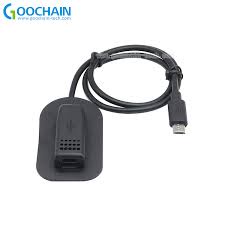In the world of medical diagnostics, ECG (Electrocardiogram) cables play a crucial role in ensuring accurate readings and monitoring of patients' heart activity. Understanding what ECG cable are, how they work, and their importance can provide valuable insights into the field of cardiology and healthcare.
What Are ECG Cables?
ECG cables are essential components used in conjunction with ECG machines to record the electrical activity of the heart. These cables are responsible for transmitting signals from the electrodes attached to the patient's body to the ECG machine, where the signals are processed and displayed as a graphical representation of the heart's activity.
How Do ECG Cables Work?
ECG cables work by capturing the electrical impulses generated by the heart as it beats. These impulses are picked up by the electrodes placed on the patient's chest, limbs, or other areas, depending on the type of ECG being performed. The cables then transmit these signals to the ECG machine, which analyzes the signals and produces a visual output, known as an electrocardiogram.
The Importance of ECG Cables
ECG cables are crucial for obtaining accurate and reliable readings of the heart's activity. They help healthcare professionals diagnose various heart conditions, such as arrhythmias, heart attacks, and other cardiac abnormalities. Without ECG cables, it would be challenging to monitor and assess the heart's health accurately.
Types of ECG Cables
There are several types of ECG cables available, including:
- Single-lead ECG cables: Used for basic monitoring and screening purposes.
- Multi-lead ECG cables: Used for more detailed cardiac assessments, such as stress testing and Holter monitoring.
- Telemetry ECG cables: Used for continuous monitoring of patients in hospital settings.
Each type of ECG cable serves a specific purpose and is designed to meet the unique needs of different cardiac monitoring situations.
Tips for Using ECG Cables
- Ensure that the electrodes are placed correctly on the patient's body to obtain accurate readings.
- Regularly check the ECG cables for any damage or wear and tear and replace them as needed.
- Follow the manufacturer's instructions for cleaning and maintaining ECG cables to ensure their longevity and performance.
In conclusion, ECG cables are vital components in the field of cardiology and healthcare. They play a crucial role in monitoring and diagnosing various heart conditions, helping healthcare professionals provide the best possible care to their patients. Understanding how ECG cables work and their importance can lead to better outcomes for patients and improved healthcare practices.


No comments yet